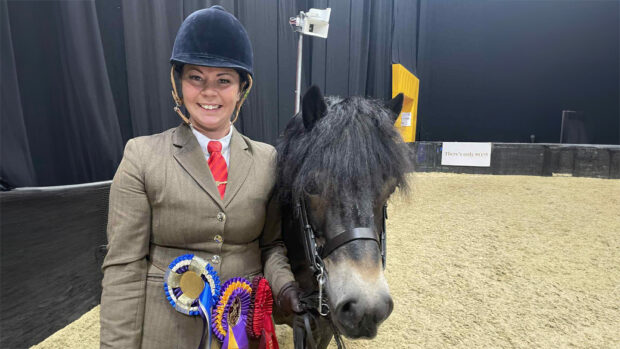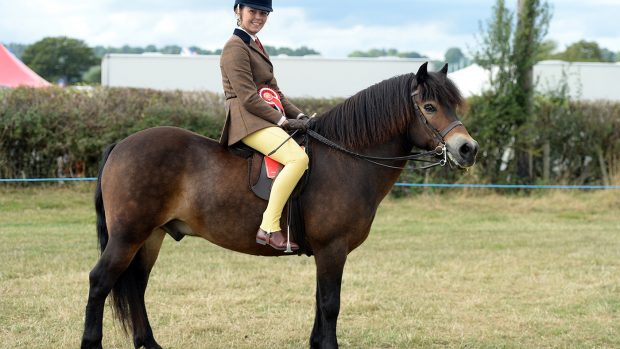A pony called Alan Partridge – or Elsinore Alan Partridge to give him his full name – is the first to contribute semen to a new initiative aimed at securing Exmoors’ future.
The Exmoor Pony Society (EPS) has launched, and raised £50,000 for, a campaign to create a gene bank, aiming to preserve genetic material and so potentially protect the breed’s future.
Society chairman Nigel Hill said: “It is our role to safeguard the future of the Exmoor pony, one of the most iconic native breeds in the UK. The Exmoor is a ‘priority’ breed according to the Rare Breeds Survival Trust and this means they’re essentially endangered.
“Instrumental in the launch will be the oversight of our recently announced scientific advisory panel, which will lead on genetic research and innovation. The panel comprises Exmoor pony experts from the fields of genetics, ecology and veterinary science, which ensures we are well placed to take advantage of developments in equine genetic conservation.”
Elsinore Alan Partridge is a 15-year-old registered Exmoor pony, who has won at multiple shows. His stable name is Q, after the Star Trek character, and he has sired 12 ponies in the studbook. He is based in Suffolk with mother and daughter breeders Sandy Wooderson and Madeline Haynes.
“We were delighted to be asked to take part in the gene bank campaign,” said Sandy. “We bought Q as a yearling and he really kicked off our love of the breed and our stud. At the age of six he had qualified for the Horse of the Year Show under saddle and has also sired some beautiful stock who are now also winning in the show ring. We are very proud of him!”
Madeline added: “It’s wonderful that the EPS is introducing such a forward-thinking initiative, which is paramount for protection of this rare breed. Learning from history, a catastrophe really could happen. We’re proud to be involved and contribute to protecting this precious native pony that faces the real life possibility of extinction, as well as safeguarding Q’s rare genetic bloodline.”
The semen donated by Q and other stallions will be owned by the Exmoor Pony Society, which will “coordinate the collection and preservation logistics”.
Only 600, or 15%, or the Exmoor population is actively breeding, which makes the breed vulnerable owing to a lack of diversity. Genetic variation is limited in Exmoors as pony numbers crashed to 50 during the Second World War, so many bloodlines were lost.
Preserving material in gene banks means that in future, a viable population could be restored if needed, or disappearing bloodlines saved.
Ecologist Sue Baker, a member of the Exmoor Pony Society’s scientific advisory panel, said: “Currently semen from only six Exmoor stallions is stored in the National Livestock Gene Bank but only three of these have sufficient doses.
“In order to reach the minimum quantity to provide breed ‘catastrophe insurance’, ideally 22 additional stallions need to contribute 50 doses each. The primary aim of the project is to achieve this within two to three years.”
You might also be interested in:

Pocket Rocket Man: Elton John heads for HOYS in two disciplines

Delicious pony poo: tuck in to help horses

Subscribe to Horse & Hound magazine today – and enjoy unlimited website access all year round
Horse & Hound magazine, out every Thursday, is packed with all the latest news and reports, as well as interviews, specials, nostalgia, vet and training advice. Find how you can enjoy the magazine delivered to your door every week, plus options to upgrade your subscription to access our online service that brings you breaking news and reports as well as other benefits.




